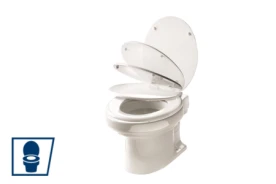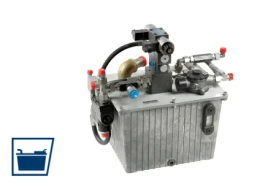10 Tips for Changing Engine Oil in a Four-Stroke Outboard
10 Tips for Changing Engine Oil in a Four-Stroke Outboard
Changing engine oil in a four-stroke outboard is essential maintenance and an easy task for DIY boat owners. Follow these 10 tips to ensure a successful oil change using Quicksilver products tailored for marine engines.
1. Stick to the Schedule
Follow your owner’s manual to change oil every 100 hours or once a year. Replace the oil before offseason storage, even if the engine hasn’t reached 100 hours, to avoid damage from acidic byproducts.
2. Use Certified Marine Oil
Automotive oil is not suitable for marine engines. Quicksilver oils, certified to NMMA® FC-W®, provide superior protection against rust and wear, specifically for marine environments.
3. Replace the Oil Filter
A clean filter ensures optimal performance. Quicksilver oil filters are designed for marine engines, offering high-quality filtration for Mercury, Yamaha, Honda, and other outboard brands.
4. Simplify with an Oil Change Kit
Quicksilver oil change kits include oil, a filter, a drain plug seal, and instructions, making it easy to maintain your engine efficiently.
5. Warm the Oil
Warm oil drains more easily. Run the engine briefly, either in the water or on a flush hose, before changing the oil.
6. Use an Oil Drain Pump
A Quicksilver pump makes clean oil removal easy and allows for oil changes even when the boat is in the water.
7. Check the Filter Seal
Ensure the old gasket isn’t stuck to the engine block. Double-gasketing can cause leaks. Lubricate the new gasket with clean oil before installation.
8. Check for Leaks
After replacing the oil, run the engine briefly, then check the oil level and ensure no leaks are present around the filter.
9. Use Proper Tools
Special tools, like a Quicksilver filter wrench, can make the process easier and help prevent equipment damage.
10. Recycle Used Oil
Properly dispose of waste oil at an automotive or recycling center. Use empty oil bottles to transport waste oil safely.
FAQs From Same Category
Comprehensive Guide to Cold-Weather Boating
For passionate boaters, winter doesn’t mean the end of the season. However, boating in cold weather requires extra attention to ensure the safety of your crew and the maintenance of your boat and engine. Here’s a detailed guide to help you navigate safely and comfortably during winter.
1. Boat Maintenance and Preparation
Proper maintenance is key to protecting your boat during freezing conditions. Follow these tips to prevent cold-weather damage:
- Engine Preparation: For sterndrive or inboard engines, flush the cooling system with antifreeze before freezing conditions. Repeat this process after every use in sub-zero temperatures.
- For Outboard Motors: These are self-draining, but you should tilt the engine down after each outing to fully drain the cooling system. Keep the motor in the down position during storage.
- Engine Oil: Check your owner’s manual for the recommended oil viscosity for cold temperatures. Most synthetic oils can handle temperatures as low as 20°F (-6°C).
- Lower Unit: Replace the lower unit lubricant before freezing conditions arrive. Water in the gear case could freeze and cause cracks. Water in the lubricant may also indicate a damaged propeller shaft seal.
2. Preventing Freeze-Related Damage
- Steering Mechanisms: Keep steering tubes well-greased to avoid freezing. Test full-range motion before heading out.
- Pumps: Drain the bilge and livewell pumps after each use to prevent freeze damage. Use antifreeze for livewell systems or avoid using them in extreme cold.
- Fuel System: Fill the fuel tank to prevent condensation. Use a quality fuel stabilizer to keep ethanol-blended fuel from degrading and causing deposits in the engine.
- Batteries: Use a battery maintainer to keep batteries fully charged. Cold weather can reduce a battery’s cranking power by up to 30% at freezing temperatures.
3. Crew Safety and Comfort
Ensuring the safety and comfort of your crew is crucial during cold-weather outings:
- Dress for the Conditions: Wear layered, insulated, and waterproof clothing to protect against the wind and cold.
- Life Jackets: Always wear a life jacket. In winter, consider float coats for both warmth and flotation.
- Protect Your Eyes: Use ski or motorsport goggles to shield your eyes from freezing air.
- Prevent Slips: Frost on the deck can be slippery and hard to see. Use caution when moving around the boat.
- Spare Clothes: Carry a dry bag with warm, spare clothing in case of accidental soaking.
4. Winter Navigation Tips
- Avoid Ice: Never attempt to navigate through ice, no matter how thin it appears. Ice can damage the hull or sensors and leave you stranded.
- Plan Your Route: Many navigation aids are removed or replaced with smaller markers in winter. Check maps and stay within marked channels.
- Share a Float Plan: Let someone know your route and expected return time. Carry a personal locator beacon or EPIRB for emergencies.
- Launch Ramps: After launching, allow water to drain from the trailer before exiting the ramp to prevent ice buildup.
5. Protecting Electronics
Marine electronics like GPS plotters can be sensitive to cold. Store them in a controlled environment when not in use. If left on the boat, cover them to prevent water infiltration and freezing damage.
Conclusion
With proper preparation and precautions, boating in winter can be both safe and enjoyable. Take care of your boat, engine, and crew to make the most of the colder months on the water.
Beware of E15 Fuel: A Risk to Your Engines
New EPA policies now allow E15 fuel to be sold year-round, making it essential for boaters and powersports enthusiasts to pay close attention when refueling. Choosing the wrong fuel can damage marine, motorcycle, ATV, or UTV engines and may even void your warranty.
What is E15 Fuel?
E15 is a gasoline blend containing 15% ethanol, derived from corn or other grains. Historically, it was restricted during summer months due to its high volatility, which contributes to smog formation in hot weather. However, starting in 2022, the EPA issued waivers allowing E15 sales year-round as a response to rising fuel prices.
Why is E15 Risky for Your Engines?
While E15 may work for some road vehicles, it is not designed for most marine and recreational engines. Ethanol absorbs moisture from the air, which can lead to:
- Corrosion of metal components
- Deterioration of plastic or rubber parts
- Fuel leakage through rubber fuel lines
- Starting and operational difficulties
High ethanol levels also increase the risk of water accumulation in the fuel tank, especially during long storage periods, posing a significant threat to marine and powersports engines.
Warranty Implications
Using fuel with more than 10% ethanol (such as E15) may void your manufacturer’s warranty. Engine manufacturers have long warned about ethanol-related damage, but the increased availability of E15 heightens the risk of accidental use due to mislabeling or lack of attention at the pump.
Tips for Safe Refueling
- Always check ethanol-content labels at the pump.
- Use only fuel with 10% ethanol or less unless your manufacturer specifies otherwise.
- Take your time to read the pump information before filling your tank, even if you’re in a hurry.
Following these simple steps can save you costly repairs and extend your engine’s lifespan.
Maintenance Tips for Mercury OptiMax Outboards
Mercury® OptiMax® outboards are renowned for their power and efficiency. With regular maintenance, your OptiMax engine, especially the 3.0-liter Pro XS® models, can deliver exceptional performance for years to come.
1. Follow the Owner’s Manual
Strictly adhering to the maintenance schedule outlined in your owner’s manual is critical to avoiding costly repairs and ensuring your engine’s reliability. If you don’t have a manual, download a PDF version from Mercury Marine or order a printed copy from an authorized Mercury dealer.
2. Use the Right Oil
The manual recommends Quicksilver Synthetic Blend Performance DFI 2-Stroke oil, which is specifically formulated for OptiMax engines. This oil minimizes carbon buildup, reduces piston wear, and optimizes engine performance. Using inferior oil can cause severe engine damage.
3. Treat Your Fuel
To keep fuel injectors clean, add Quicksilver Quickleen® at every fill-up. This cleaner removes carbon deposits from injectors, spark plugs, and piston crowns. Follow the bottle’s instructions for optimal results.
4. Replace the Fuel Filter with Proper Tools
Fuel filter replacement is part of the annual or 100-hour maintenance. Use the Quicksilver Fuel Filter Tool (p.n. 91‑896661) to safely remove and replace the filter without damaging the plastic tabs. Apply engine oil or Quicksilver 2-4-C Marine Grease to the filter’s O-rings before installation.
5. Drain the Vapor Separator Tank
Follow the instructions in the manual to drain water from the Vapor Separator Tank (VST). This helps maintain engine performance and prevents moisture-related issues.
Regular Maintenance for Long-Term Enjoyment
With proper care and the right tools, your Mercury OptiMax outboard will continue to provide reliable power and performance for years of on-water enjoyment.
How to Change Oil in Your Mercury Outboard Engine: A Practical Guide
Oil is the lifeblood of your Mercury® outboard engine. Regularly changing the oil and filter after 100 hours of use or at least once a year is essential maintenance. Many boaters perform this task during winterization or before off-season storage to ensure their engine is ready for the next season.
1. Choose the Right Oil and Filter
Using the correct oil and filter as outlined in your owner’s manual is vital. Quicksilver marine oils, available in mineral, synthetic, and synthetic blend formulations, are designed to protect marine engines from wear and corrosion. Quicksilver filters ensure high-quality filtration and are built to prevent leaks or collapse.
2. Essential Tools
- Wrench or socket for drain plug
- Oil filter wrench
- Funnel
- Clean rags and gloves
- Oil pump or drain kit
- Oil catch pan
3. Draining the Oil
- Trim the outboard past vertical for one minute to drain trapped oil.
- Return the outboard to vertical and remove the cowl.
- Use a pump to extract oil through the dipstick or locate the drain plug to release oil into a catch pan.
- Tighten the drain plug and dispose of the oil properly.
4. Replacing the Filter
- Locate the oil filter (usually on the starboard side).
- Place a rag below the filter, remove it, and lubricate the new filter’s gasket.
- Thread the new filter and tighten securely.
5. Adding Fresh Oil
- Check the drain plug, add new oil with a funnel, and check the level with the dipstick.
- Idle the engine to ensure no leaks, then recheck the oil level.
Pro Tip: Check for Contaminants
Look for signs of water (milky oil) or fuel (strong odor) in your used oil. If contamination is found, consult a Mercury dealer.
By following these simple steps and using high-quality Quicksilver lubricants and filters, you’ll keep your Mercury outboard running at its best.































